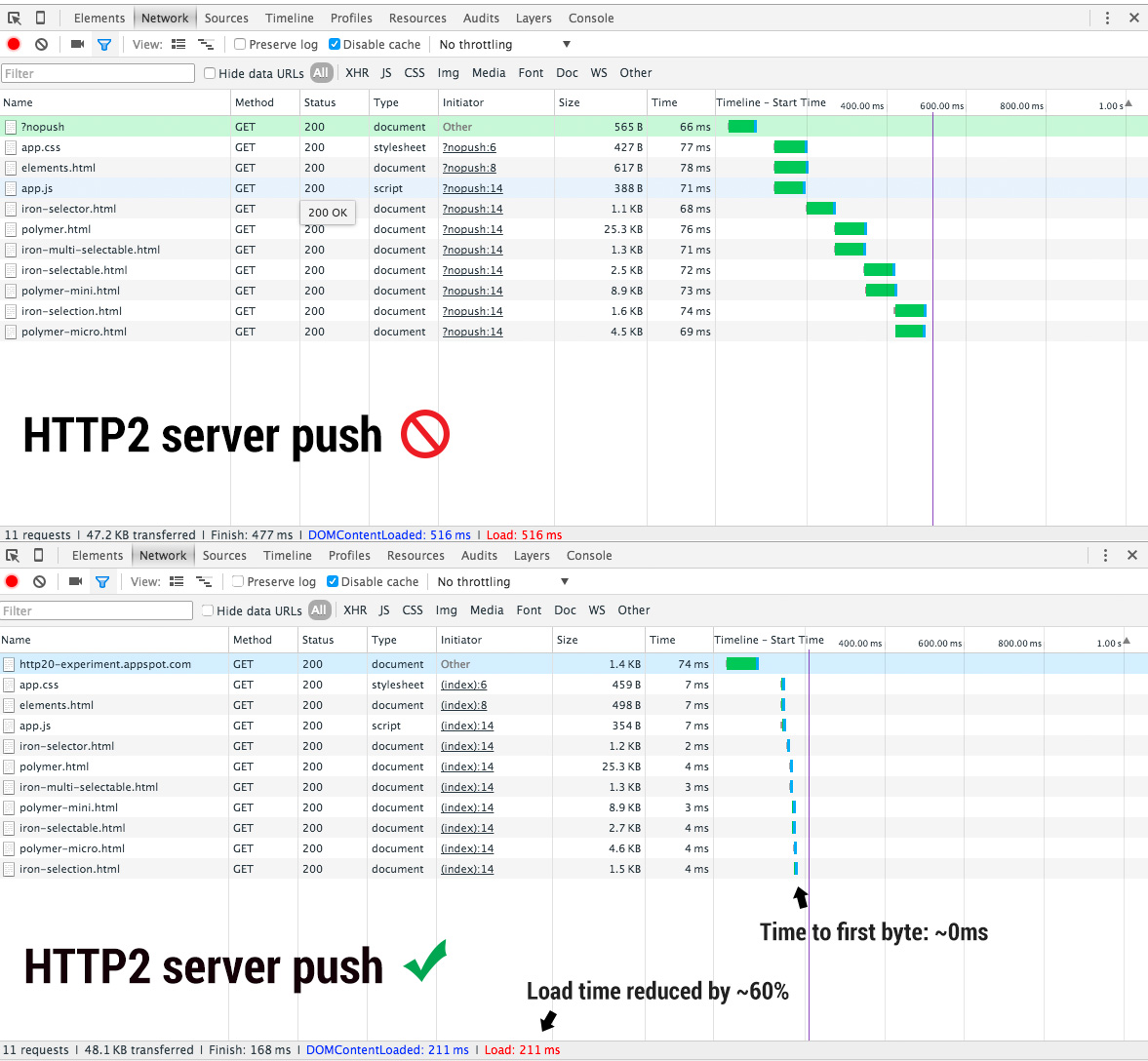HTTP2 push tester
what effect does server push have on critical CSS/JS and HTML Import loading perf?
For this app, pushing resources reduced total load time by ~60%!
- Push means we no longer need to concatenate all JS/CSS together in one file! This reduces the amount of tooling to make a great, fast web app.
- The browser appears to handle smaller, individual files better than one large file. More testing needs to be done here, but the initial results are promising.
- HTML Import resources no longer need to be vulcanized to crush sub-imports into a single file. In testing, the latter (large single file of JS/HTML/CSS) is slower. Boom!
- In a world of web components, authors write components in a modular way using HTML Imports, a bit of CSS/JS, and markup. Push means we can ship our code exactly as it was authored, minimizing the differences between dev and prod.
Ways to run this app:
- / - push all static resources for this page
- ?nopush - no push
- ?vulcanize - flattened html imports, push all static resources
- ?vulcanize&nopush - flattened imports, no push
